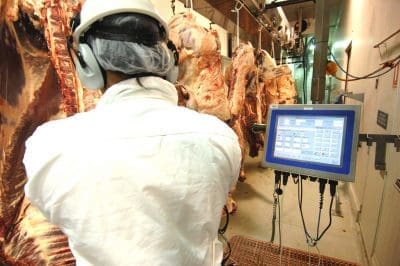QUEENSLAND direct consignment slaughter grid prices have risen sharply since Friday, as processors struggle to fill kill rosters due to further weather disruptions.
Competitive quotes from some processors have risen 20c/kg as ‘wet weather money’ designed to incentivise people to overcome tough conditions is being spashed around in an attempt to fill gaps in processing schedules, after substantial weekend rain in parts of southern and western Queensland and the eastern half of NSW and Victoria.
 Several other Queensland operators have not yet shifted grids, but evidently are in a somewhat better position, supply wise – especially with more short holiday weeks ahead.
Several other Queensland operators have not yet shifted grids, but evidently are in a somewhat better position, supply wise – especially with more short holiday weeks ahead.
Quotes seen this morning have heavy cows for kills in southern Queensland at around 460-470c, and four-tooth grass ox at 525-540c.
Central Queensland rates have also lifted 20c/kg this week, but remain 10c behind southern parts of the state, as quoted above.
Some significant cattle supply routes servicing coastal meatworks were closed late last week due to local flooding, with 50-100mm common in some eastern areas of NSW and QLD since Thursday. The nation’s largest beef plant, JBS Dinmore was forced to cease operations today as rain disrupted supply.
Reports of mobs in the Maranoa being loaded onto single-deck trailers and skull-dragged out using tractors surfaced yesterday, indicating just how challenging some conditions have become.
One supply chain contact said it was only taking another 15-25mm of rain on top of country that was already wet from earlier falls, to make cattle movement conditions difficult again.
Several processors said they had now secured enough stock to get out of trouble, but many plants remain ‘reasonably current’ in terms of bookings.
If the tea leaves are being read right, this is likely to be a short-lived rally in prices, however. Once conditions dry out, big inflows of finished slaughter cattle are anticipated in Queensland through May and into June. In no way can this week be interpreted as a change in the fundamental direction of the slaughter cattle market.
Big gaps are now evident between southern and northern slaughter cattle rates, suggesting it won’t be too long before southern processors start to venture north to supplement their weekling kills, while local supply is modest.
Southern states quotes seen this week include eastern regions of Southy Australia, where direct consignment offers of as much as 520c/kg on heavy cows were seen this morning and 550c on four-tooth ox. Southern NSW cow grids are still at 460c, but bullocks have risen to 560c/kg for no-HGP examples.
Numbers grow in saleyards
Most physical sales held early this week have seen numbers expand significantly.
Wodonga sale this morning yarded 2142 head, up 50pc from last week. The cow market witnessed a remarkable surge, with heavy well-finished types gaining 17c and trading between 258c and 286c/kg. The middle run maintained its ground, selling from 231-247c/kg.
Naracoorte sale rose about 40pc to 851 head. Grown steers sold 10-20c kg stronger, the grown heifers were 15c/kg dearer, cows sold 10-20c/kg stronger.
A preliminary Roma report said this morning’s yarding reached 3635 head, up more than 2400 on last week. Heavier categories experienced stronger demand. Store condition cows met strong demand selling from 102-170c/kg, the score 2 cows 400-520kg sold from 200-245c/kg. Score 3 cows over 520kg made to 255c to average 241c/kg.
